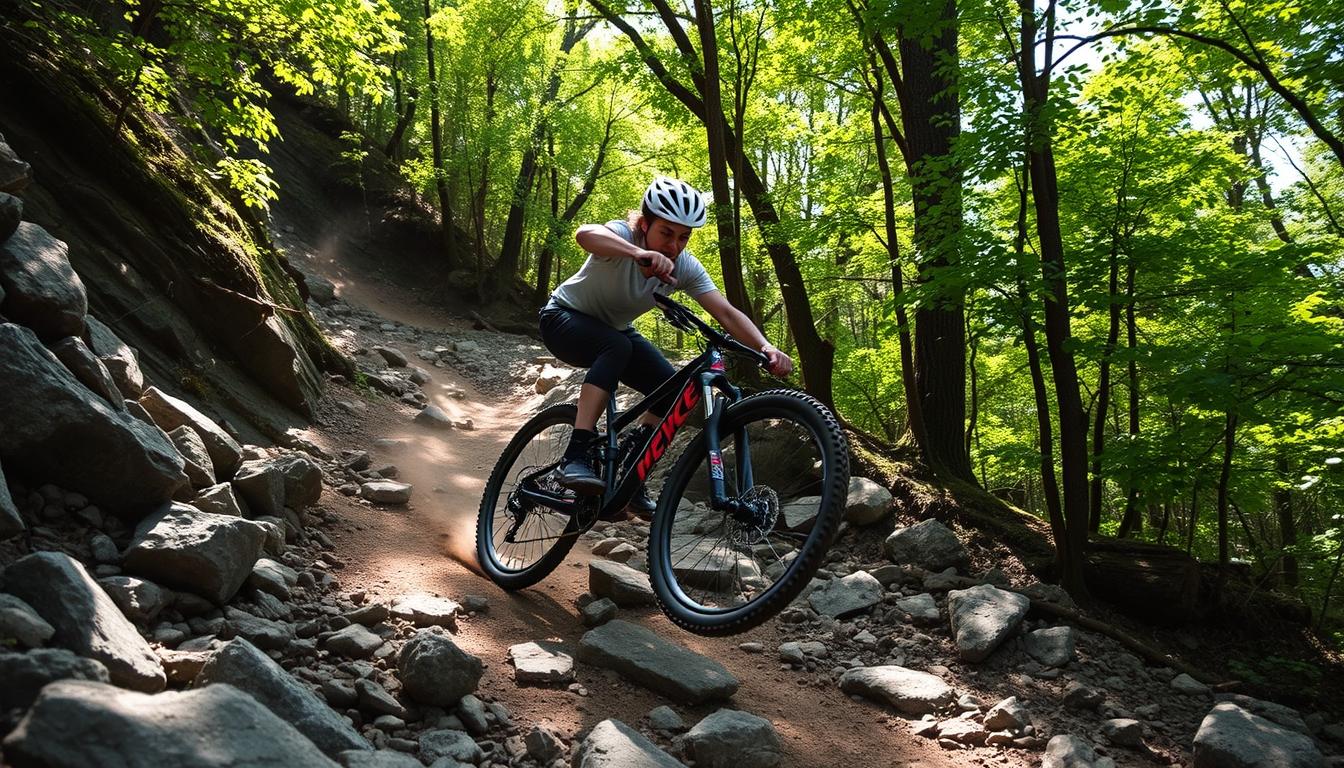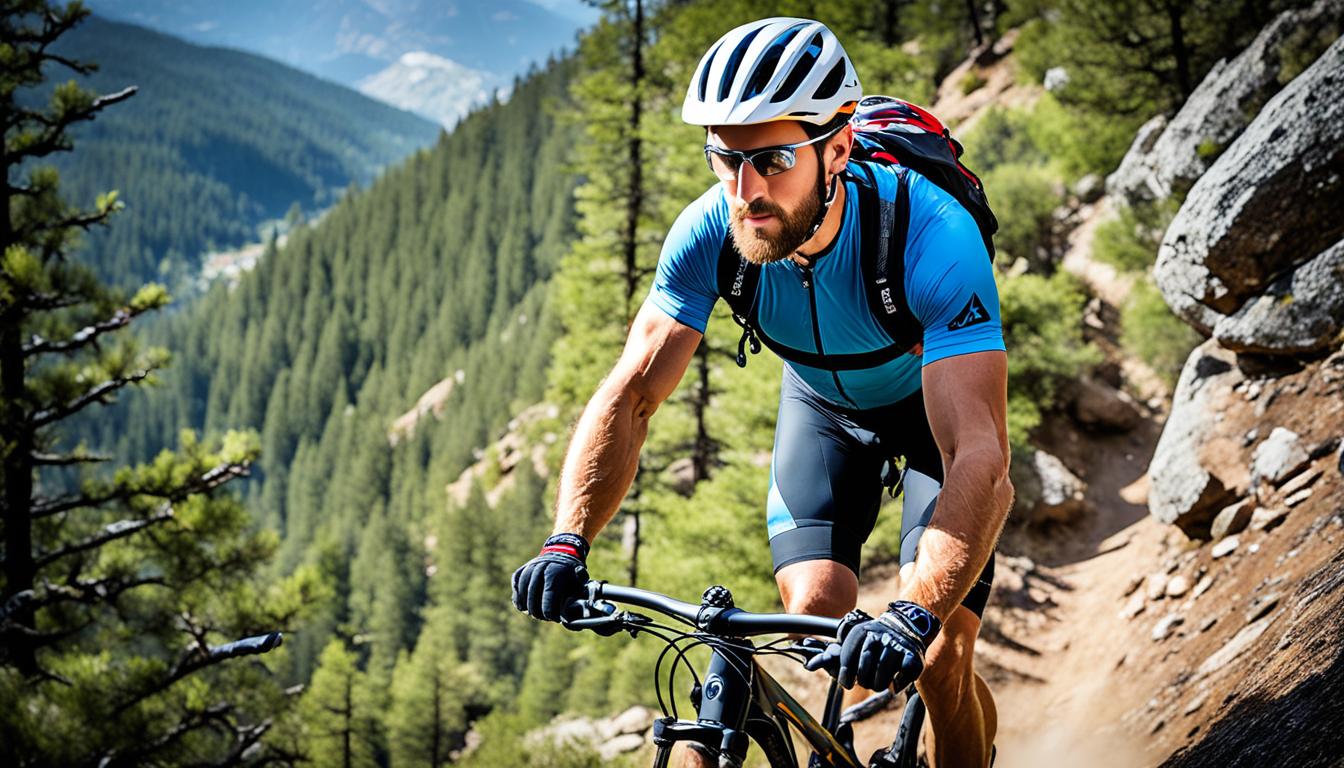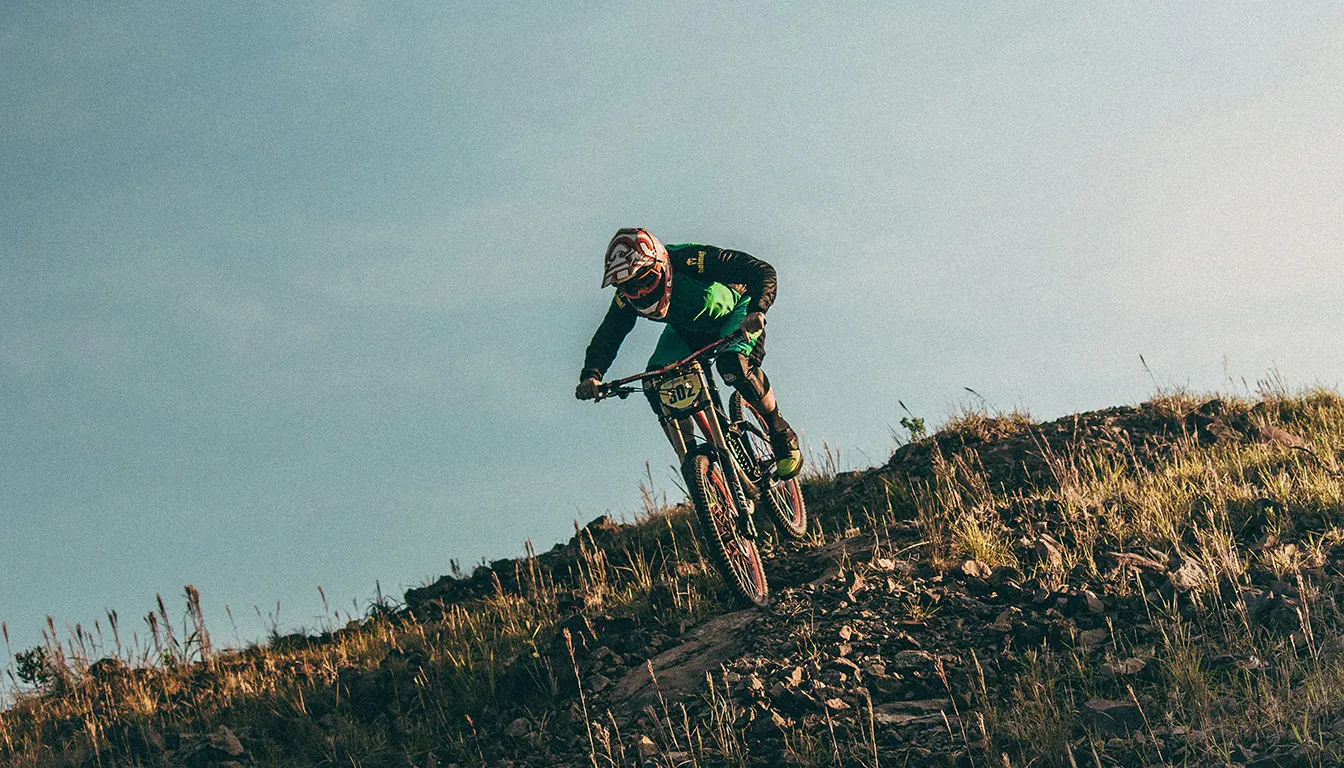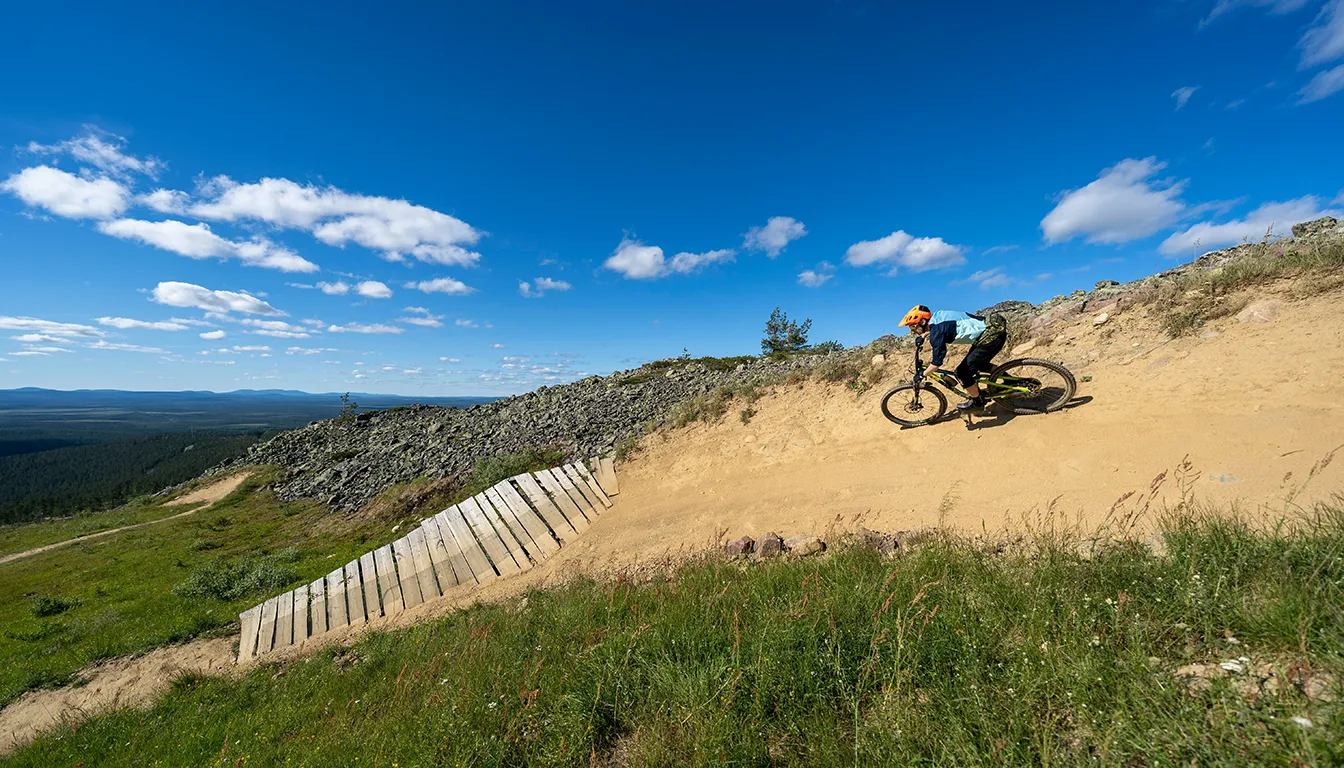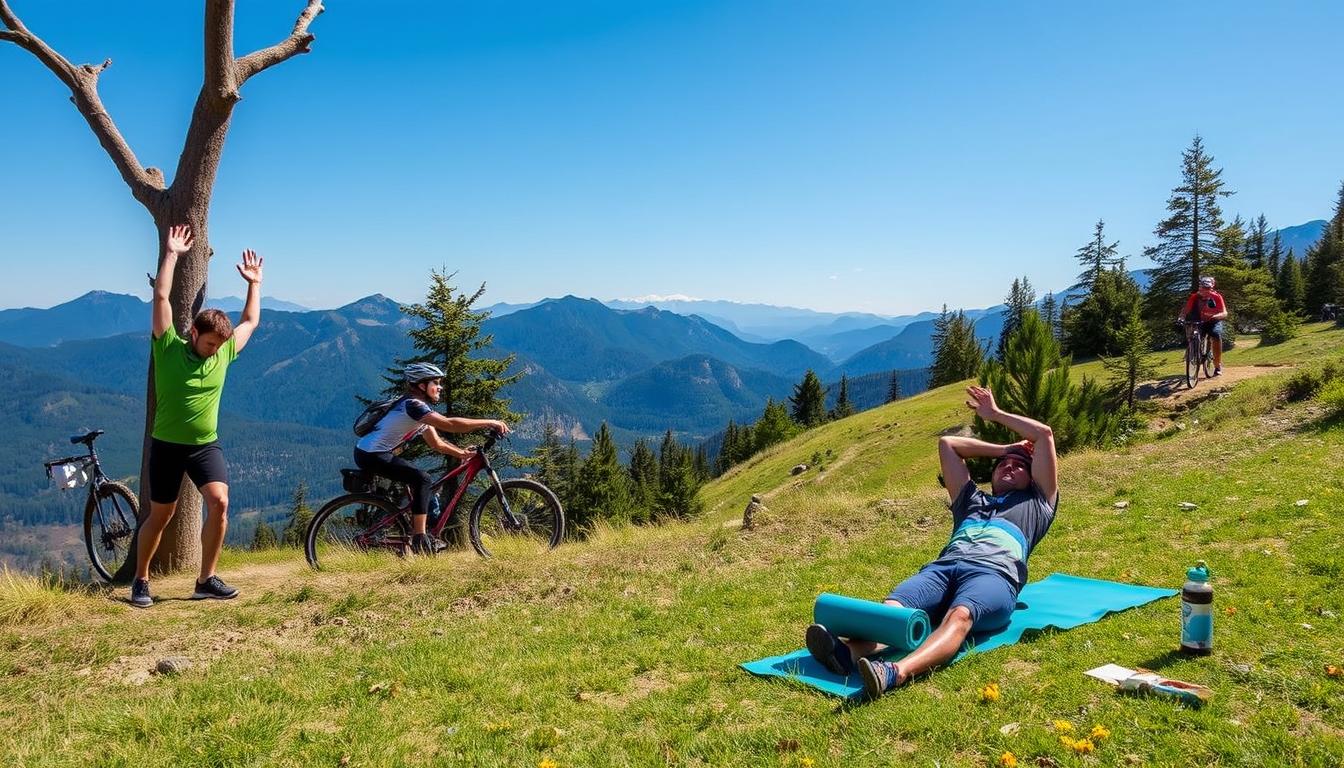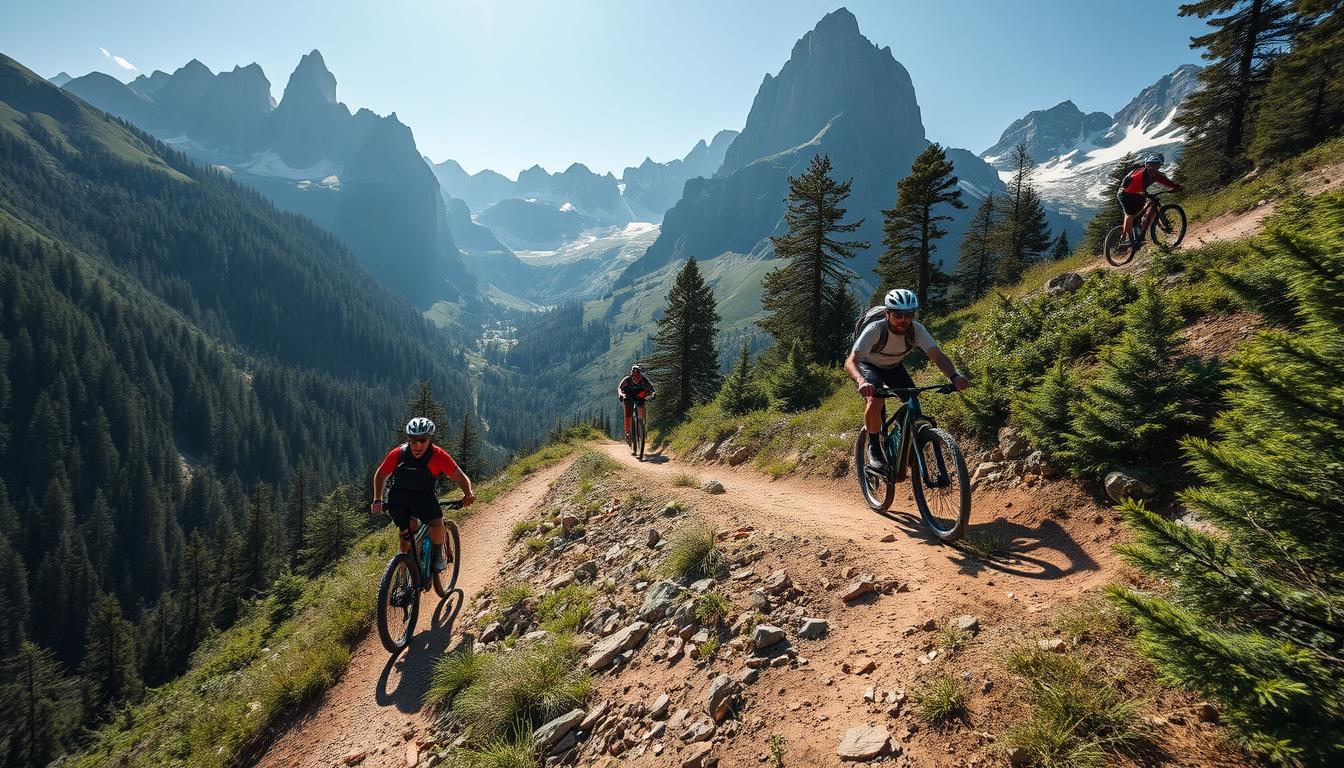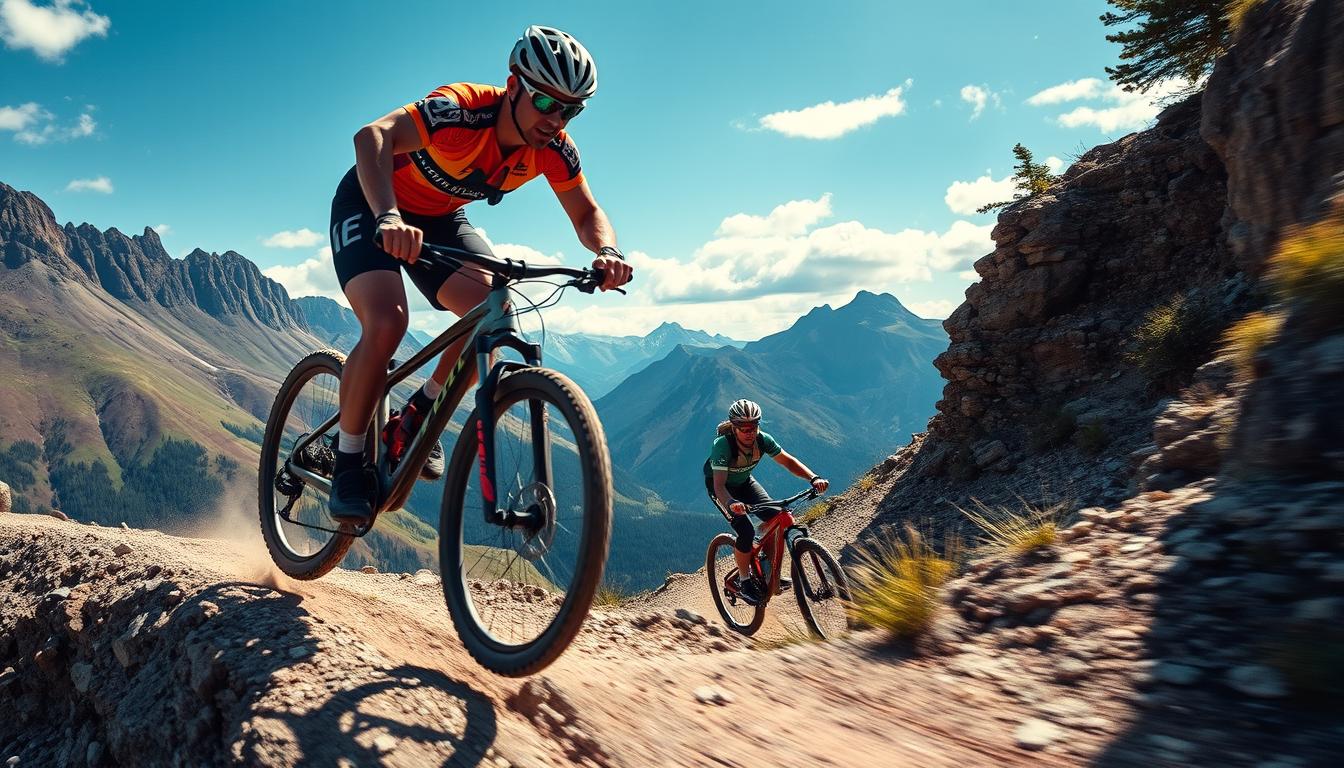Balance is key in mountain biking. It lets you handle uneven grounds, sharp turns, and sudden ups and downs. You need great balance to avoid falls and ride smoothly. This makes biking both safer and more fun on tricky trails.
Our focus here will be on methods to boost your balance. This will help you keep control on your bike, no matter the obstacles. From balance-focused training and strength workouts to enhancing your concentration, we’ll cover several tactics. These will help improve your biking skills significantly.
The Importance of Balance in Mountain Biking
Balance is crucial in mountain biking. It affects rider safety and performance on tough trails. The importance of balance shines when tackling uneven terrains. Good balance allows for effective navigation and control. Without it, riders may find it hard to keep steady, affecting their skills.
Understanding Proprioception
Proprioception is our body’s way of knowing where it is and how it moves. This sense is key for good balance on a bike. Our muscles, tendons, and joints have proprioceptors. They send the brain info about our body’s position. Better proprioception improves a rider’s reaction to sudden changes on trails, boosting performance.
Why Balance Affects Performance
Balance is vital for smooth, controlled drops in mountain biking. Learning to ride slowly and with confidence helps tackle obstacles better. Instructors highlight how ignoring balance basics can cause injuries. It lowers riders’ confidence and harms performance. Enhancing core stability and balance through targeted drills is crucial. This approach is often found in skills camps.
How to Improve Balance for Mountain Biking
Getting better at balancing is key for mountain biking. This is true especially on tough terrains. Doing specific drills can really help improve your sensing and stability. By practicing different exercises, you can get better at controlling your bike and feel more confident.
Drills to Enhance Proprioception
Balance drills are great for boosting your proprioception. This means knowing where your body is and how it moves. Try the one-leg balance test and cone pickups to get more stable and aware. Using things like an Indo Board or a stability ball can make these exercises more fun and effective.
- Start with basic balance drills like standing on one leg for 30 seconds.
- Incorporate cone pickups, which involve bending down to pick up objects without losing balance.
- Progress to more complex movements, such as lateral lunges and single-leg squats.
- Consider using a stability ball or medicine ball to add resistance and challenge your core stability.
Practicing Stability Exercises
Regular stability training makes a big difference. Tailoring exercises to your fitness level helps set doable goals. Focus on engaging your core muscles during these exercises. This greatly helps with stability. Adding more challenging movements, like twisting while in a plank or doing stir motions on a stability ball, pushes your balance skills further.
As you get better with these exercises, your physical strength and confidence will grow. Improved balance lets you enjoy mountain biking more. You’ll feel the thrill of better control on tricky trails.
Integrating Strength Training for Better Balance
Strength training is key for mountain bikers looking to improve balance. A good routine boosts stability, essential for tough rides. Exercises for the legs and core build a strong base, enhancing trail performance.
Leg Strengthening Exercises
Adding leg exercises to your training helps with balance. Useful exercises include:
- Squats – They build leg strength, working the quadriceps, hamstrings, and glutes.
- Lunges – Great for working each leg individually, lunges boost balance.
- Calf Raises – Strengthening calves helps with balance on rough terrain.
Doing these exercises 2-3 times a week in the offseason helps build muscle without affecting your riding.
Core Stability and its Role in Balance
A strong core is crucial for balance on the bike. It aids in better posture and performance. Exercises to try include:
- Planks – These work the whole core, enhancing stability and endurance.
- Bird Dogs – This exercise betters core strength and upper-lower body coordination.
Incorporating these core exercises makes for a balanced, controlled ride, perfect for tricky trails.
Techniques for Balance on the Trails
Getting good at keeping balanced on the trails is key for mountain bikers. Using different trail techniques really helps a rider deal with tough ground. We’ll look at some good ways to get better at staying upright and in control.
Training on Uneven Surfaces
Practicing on uneven surfaces is very important to get better at balancing. Try riding on rocky paths, grass, or gravel. This helps your muscles learn and get better at reacting fast to surprise changes under your wheels.
Adjusting Your Riding Position
How you sit and stand on your bike matters a lot. The right riding position means keeping balanced right over your bike. Being in this position helps with control. It makes going downhill and taking tight turns easier, and you can adjust quickly when you need to.
Utilising Mental Focus for Greater Stability
Thinking right plays a big part in how well you ride. Focusing can really help you stay balanced and steady. Using your mind to picture what’s ahead can keep you ready for what comes. Being mindful makes the link between you and your bike stronger, helping you ride better.
For tips on better balance and stability, look into stability exercises and more training methods to boost your riding.
Mix physical training, riding tweaks, and mind tricks to level up your mountain biking skills.
Conclusion
Balance is key for mountain bikers to perform better. By working on balance, riders can handle rough lands and steep paths well. Exercises that improve balance, stability, and strength are crucial.
Also, using the right gear, like SAOLAR’s photochromic sunglasses, makes a big difference. These sunglasses adjust to light changes and help bikers see clearly. They make riding on tough tracks easier and safer.
Having a balanced mindset is important too. This means focusing both on your mind and body. By doing so, bikers will enjoy their rides more and feel confident. They’ll be able to take on hard trails with ease.
FAQ
Why is balance important in mountain biking?
Balance helps you control your bike on rough grounds. It boosts safety and performance on bends, barriers, and slopes.
How does proprioception affect my riding?
Proprioception lets you know where you are in space, aiding in balance. Improving it means better reactions to changes, keeping you stable.
What specific drills can improve my balance?
Try drills like the one-leg balance test and cone pickups. Also, lateral lunges and single-leg squats improve stability. Regular practice sharpens your balance for riding.
How can strength training help with balance improvement?
Strength training, especially for legs with squats and lunges, boosts balance. A strong core also keeps you aligned and stable for biking.
What are the benefits of training on uneven surfaces?
Uneven surfaces train your balance for mountain biking. They fine-tune your body to handle varied terrains, enhancing control.
What techniques enhance my mental focus while riding?
Mental techniques like visualisation and mindfulness improve focus. Being mindful of your movements is key for handling tricky trails.
